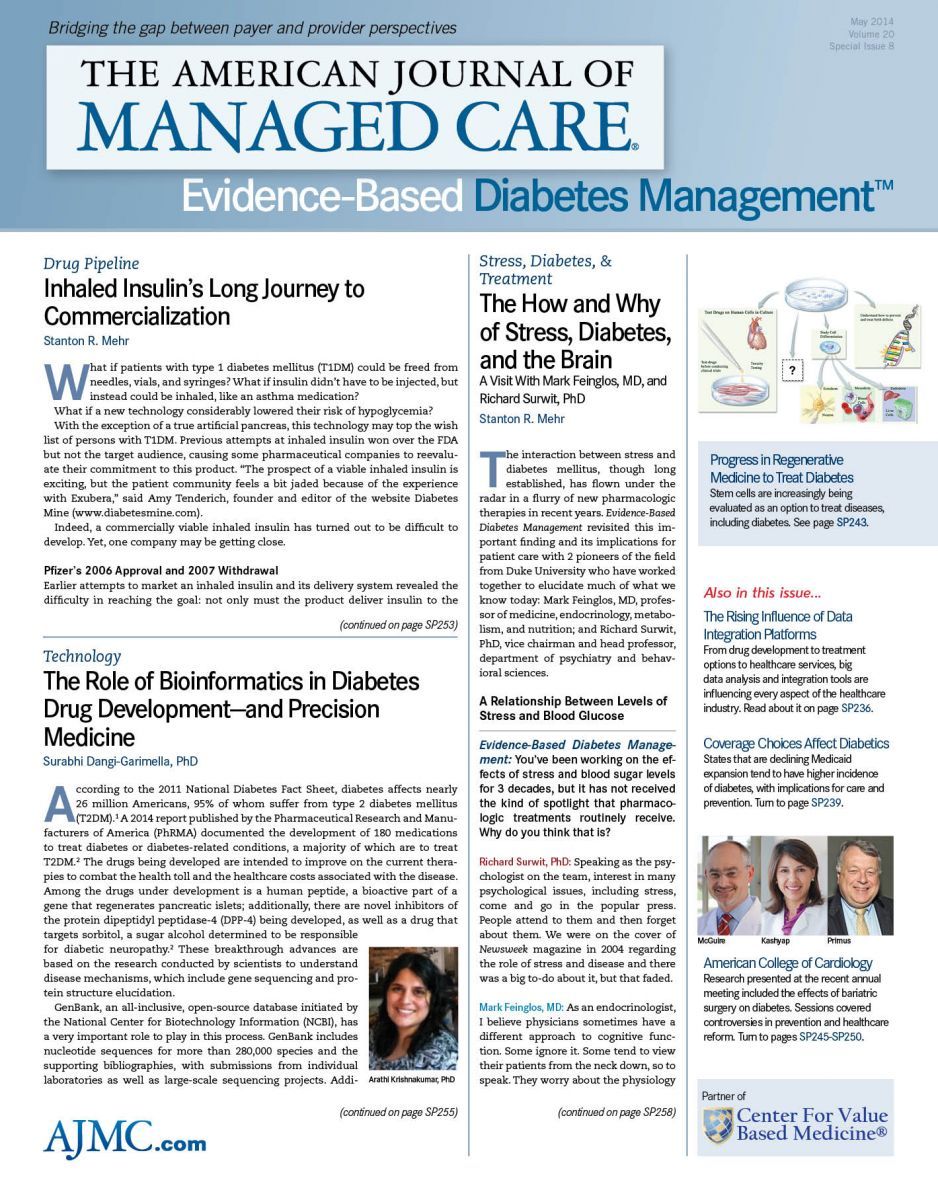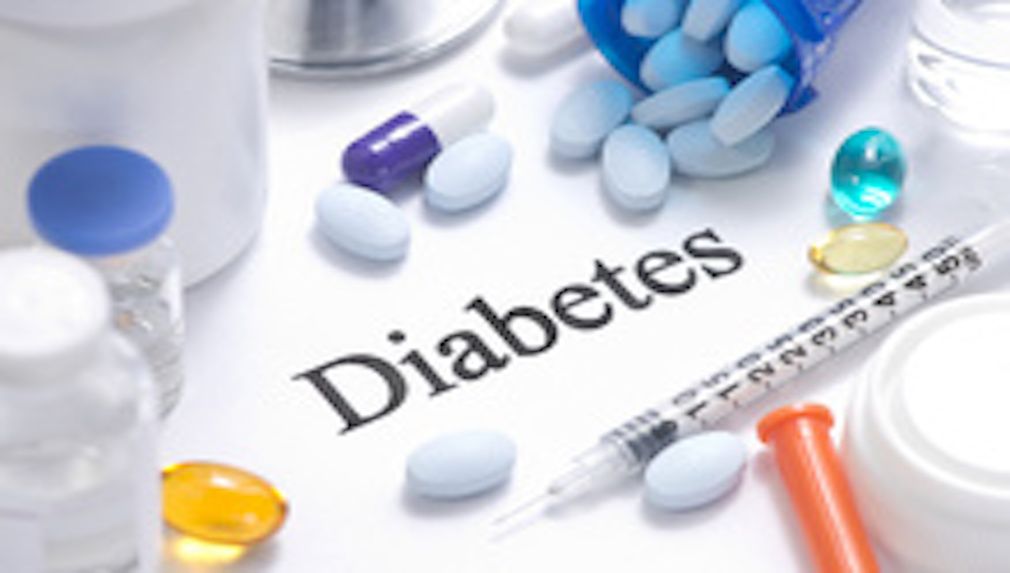Publication
Article
Evidence-Based Diabetes Management
The Persistent Complication of Hypoglycemia in Diabetics
Author(s):
Hypoglycemia, also referred to as insulin reaction or insulin shock, is defined as abnormally low glucose in the blood (low blood sugar), usually below 70 mg/dL. The condition is usually associated with several symptoms, including shakiness, nervousness, sweating, chills and clamminess, dizziness, hunger and nausea, confusion, weakness, sleepiness, seizures, and losing consciousness.
Severe hypoglycemia can cause accidents, injuries, coma, and may even prove fatal.1 Recent studies have associated severe hypoglycemia as a risk factor for dementia, falls, fractures, and heart attacks.2 The simplest solution under hypoglycemic conditions is to provide a sugar source to the patient. However, managing the condition can prove especially challenging in individuals who are hypoglycemic without any evident symptoms, defined as hypoglycemia unawareness. Patients suffering from hypoglycemia unawareness would be difficult to wake from sleep if they do get hypoglycemic at night. This condition is most commonly observed in individuals who experience frequent episodes of hypoglycemia, among chronic diabetics, or in those with tightly controlled diabetes.1
However, a collaborative study between Kaiser Permanente and Yale University School of Medicine, published last year in the journal Diabetes Care, revealed that hypoglycemia can also affect those with poorly controlled diabetes. The authors stated that nearly 11% of the more than 9000 responders who had participated in the survey had experienced hypoglycemia, independent of blood sugar control.3
Two recent papers in Diabetes, a collaboration between 2 laboratories at the Department of Biological Sciences, University of Southern California, delved into the details of the feedback signals received by the brain following a drop in blood sugar in hypoglycemic diabetics. Their research identified a startling difference in neuronal firing between slow-onset hypoglycemia and rapid-onset hypoglycemia.4,5
Disease Burden on Healthcare
A study conducted by the pharmaceutical company Novo Nordisk, in association with the health technology assessment company Heron Evidence Development, identified that a greater number of comorbidities (excluding dyslipidemia) were prevalent in hypoglycemic diabetic patients than in their matched controls, diabetics who had not presented with any hypoglycemic events. A majority (97%) of the patients were persons with type 2 diabetes mellitus (T2DM) who were documented to have required medical attention during 2009.
The analysis, presented at the meeting of the International Society for Pharmacoeconomics and Outcomes Research, showed that patients experiencing hypoglycemic events had significantly higher all-cause annual healthcare costs over controls ($32,337 vs $19,786). The study identified nonsurgical inpatient costs as the primary driver of the significant difference between the cohorts. On the contrary, controls had higher outpatient costs over the controls.6
Another study evaluating the cost of hypoglycemia in 536,581 patients with T2DM estimated the total cost during a 4-year study period (2004-2008) at $52,223,675, accounting for 1% of all inpatient costs, 2% of emergency department (ED) costs, and 0.3% of outpatient costs. The average costs for hypoglycemia visits were high for an inpatient admission ($17,564) compared with an outpatient visit ($394), which mirrored the findings of the Novo Nordisk study.7 The authors reiterated the need for continued vigilance and efforts to develop strategies to curb these
avoidable costs. Analysis of ED visits for insulin-related hypoglycemia over a 5-year period found that the United States healthcare system had forfeited $600 million, excluding hospitalization
costs.8
What Prevents the Brain From Generating Feedback Compensation in Diabetics?
Patients suffering from type 1 diabetes mellitus as well as T2DM often face a recurring issue in disease management: iatrogenic hypoglycemia. It is defined as an abnormally low plasma
glucose concentration that exposes the individual to potential harm, a definition coined by a joint work group of the American Diabetes Association and The Endocrine Society.9
Normally, following a drop in the blood glucose level, the body compensates by reducing insulin secretion (which lowers glucose) and increasing glucagon secretion (which increases
glucose) by the pancreas, along with increasing epinephrine secretion by the adrenal gland. These physiological responses prompt the behavioral response of carbohydrate ingestion
prompted by neurogenic symptoms that originate from a sympathetic neural response (Figure 1). Altogether, a continuous supply of glucose to the brain is ensured.10
In diabetics, however, due to the lack of insulin-producing pancreatic beta cells, the feedback mechanisms that regulate insulin levels are obsolete. So the exogenously administered insulin
is regulated merely by absorption and clearance. Additionally, the pancreas fails to secrete increased glucagon and the adrenal gland fails to increase epinephrine production (Figure 2).
Together, these compromised physiological conditions in patients with diabetes result in a defective glucose counter-regulatory response (CRR) and increases their risk of hypoglycemic
episodes at least 25-fold. Additionally, lack of symptoms of hypoglycemia due to attenuation of the sympathoadrenal response results in hypoglycemia unawareness, further increasing the risk of severe hypoglycemia 6-fold or more.10
Recent Findings
The results alluded to earlier, published in the journal Diabetes, teased out the exact mechanism of failure of the sympathoadrenal CRR in a rat model. It has been long known that the rate
of fall of blood glucose determines the participation of the brain (central nervous system) versus the peripheral nervous system to activate the CRRs.
Rapid-onset hypoglycemia results in the activation of the brain glucosensing elements (hindbrain), whereas slow-onset hypoglycemia stimulates participation by the portal-mesenteric vein (PMV). However, the specific role of catecholamine neurons of the hindbrain in glucosensing has not been clear. In this paper, the authors highlighted that catecholamine neurons
stimulate sympathoadrenal CRR during slow-onset hypoglycemia and that rate of onset is a major determinant of the mechanism adopted for the CRR.4
The second study demonstrated that peripheral glucosensory response from the PMV is essential for activation of a complete CRR during slow-onset hypoglycemia.5 The lead authors on the 2 papers, Casey Donovan, PhD, professor and section head, human and evolutionary biology, Department of Biological Sciences at the University of Southern California, and Alan Watts, DPhil, professor in the same department, said in an e-mail response, “While it’s been postulated that these various glucose-sensing loci constitute an extended neural network responsible for mediating the hypoglycemic CRR, there was not substantial evidence. These 2 papers now provide the first evidence demonstrating the existence of such a network. Specifically, we show that
PMV glucose sensing input is critical for the activation of hindbrain neurons during slow-onset hypoglycemia and the subsequent CRR.” They further pointed out that results from their neuronal
activation data suggest that distinct neural networks are in play during rapid- vs slow-onset hypoglycemia.
“The fact that hypoglycemia generally develops slowly in insulin-dependent diabetics points to the importance of fully understanding the functional organization of these glucose-engaged
neural networks,” say the authors. Philip E. Cryer, MD, Irene E. and Michael M. Karl Professor of Endocrinology and Metabolism in Medicine, Washington University School of Medicine,
and a past president of the American Diabetes Association, summarized the significance of these findings in an email: “The reports…provide evidence that signals from the periphery (eg,
from the PMV) travel through the brain stem to the hypothalamus to mediate the sympathoadrenal response to relatively slowly developing hypoglycemia in rats. “As developed in some detail,10 the mechanism of the attenuated sympathoadrenal response to hypoglycemia that follows recent antecedent hypoglycemia occurs during sleep or follows earlier exercise and characterizes
hypoglycemia-associated autonomic failure; however, its increased risk of iatrogenic hypoglycemia in diabetes is not known. It could directly involve the CNS (central nervous system) or the afferent or efferent components of the sympathoadrenal system.”
Cryer believes that understanding the physiology of this response could contribute to an improved understanding of the hypoglycemic episodes in diabetics. A better handle on the mechanism
of this avoidable phenomenon, via improved research efforts, is definitely the need of the day.References
1. Hypoglycemia. The American Diabetes Association website. http://www.diabetes.org/living-with-diabetes/treatment-and-care/bloodglucose-control/hypoglycemia-low-blood.html. Accessed April 23, 2014.
2. Severe low blood sugar occurs often in patients with type 2 diabetes [press release]. Oakland, CA: Kaiser Permanente; July 30, 2013. http://share.kaiserpermanente.org/article/severe-low-blood-sugar-occurs-often-in-patientswith-type-2-diabetes/. Accessed April 23, 2014.
3. Lipska KJ, Warton M, Huang ES, et al. HbA1c and risk of severe hypoglycemia in type 2 diabetes: the diabetes and aging study. Diabetes Care. 2013;36(11):3535-3542.
4. Jokiaho AJ, Donovan CM, Watts AG. The rate of fall of blood glucose determines the necessity of forebrain-projecting catecholaminergic neurons for male rat sympathoadrenal responses
[published online April 16, 2014]. Diabetes. doi:10.2337/db13-1753.
5. Bohland M, Matveyenko AV, Saberi M, Khan AM, Watts AG, Donovan CM. Activation of hindbrain neurons is mediated by portal-mesenteric vein glucosensors during slow-onset hypoglycemia
[published online April 11, 2014]. Diabetes.doi:10.2337/db13-1600.
6. Pietri G, Kennedy K, Goldhammer M, Bouchard J. The cost of severe hypoglycemic events in diabetes: a retrospective claims database study. Poster presented at: ISPOR 17th Annual International Meeting; June 2012; Washington, DC. http://www.ispor.org/research_pdfs/40/pdffiles/PDB37.pdf. Accessed April 24, 2014.
7. Quilliam BJ, Simeone JC, Ozbay AB, Kogut SJ. http://www.ajmc.com/publications/issue/2011/2011-10-Vol17-n10/AJMC_11oct_Quilliam_673to680#sthash.A0WyNwqV.dpuf. Am J Manag Care. 2011;17(10):673-680.
8. Busko M. Insulin-related hypoglycemia: common, costly, preventable. Medscape. http://www.medscape.com/viewarticle/821764. Published March 11, 2014. Accessed April 24, 2014.
9. Seaquist ER, Anderson J, Childs B. Hypoglycemia and diabetes: a report of a workgroup of the American Diabetes Association and the Endocrine Society. Diabetes Care. 2013;36(5):1384-1395.
10. Cryer PE. Mechanisms of hypoglycemiaassociated autonomic failure in diabetes. N Engl J Med. 2013;369:362-372.







